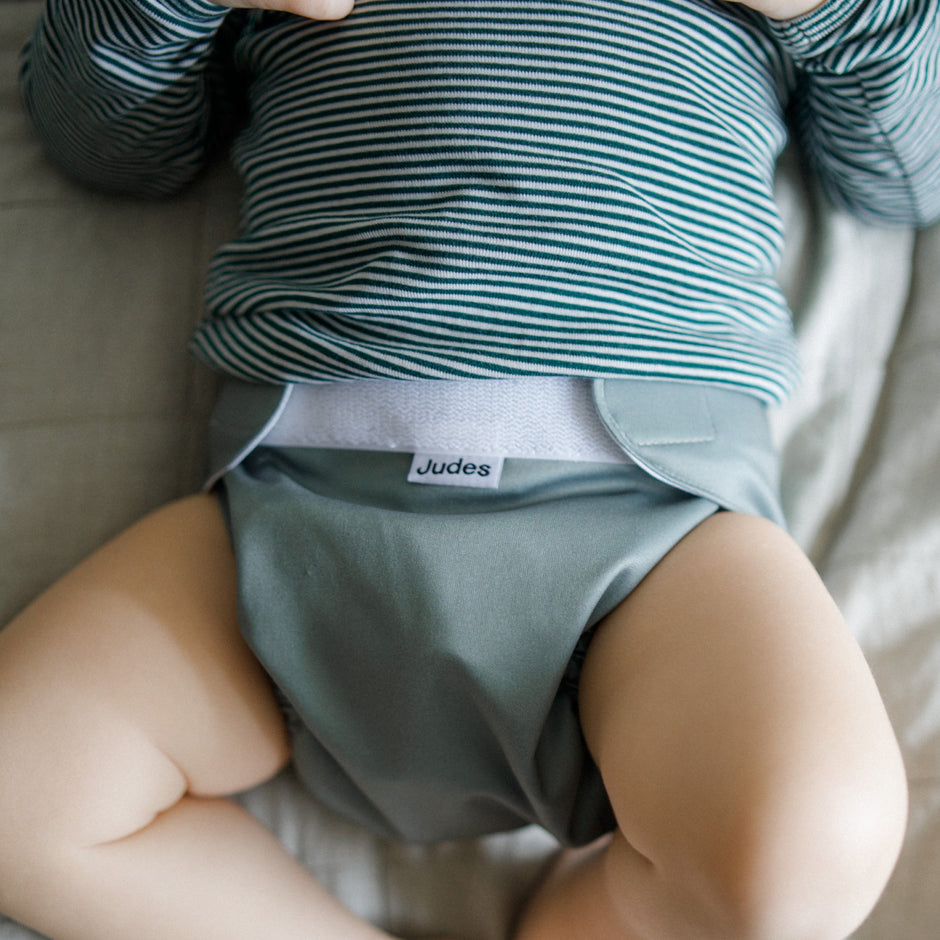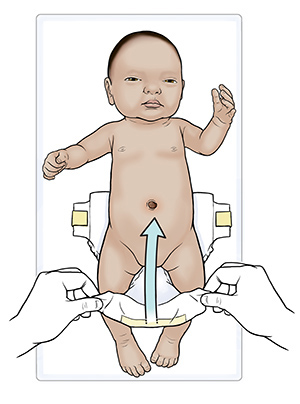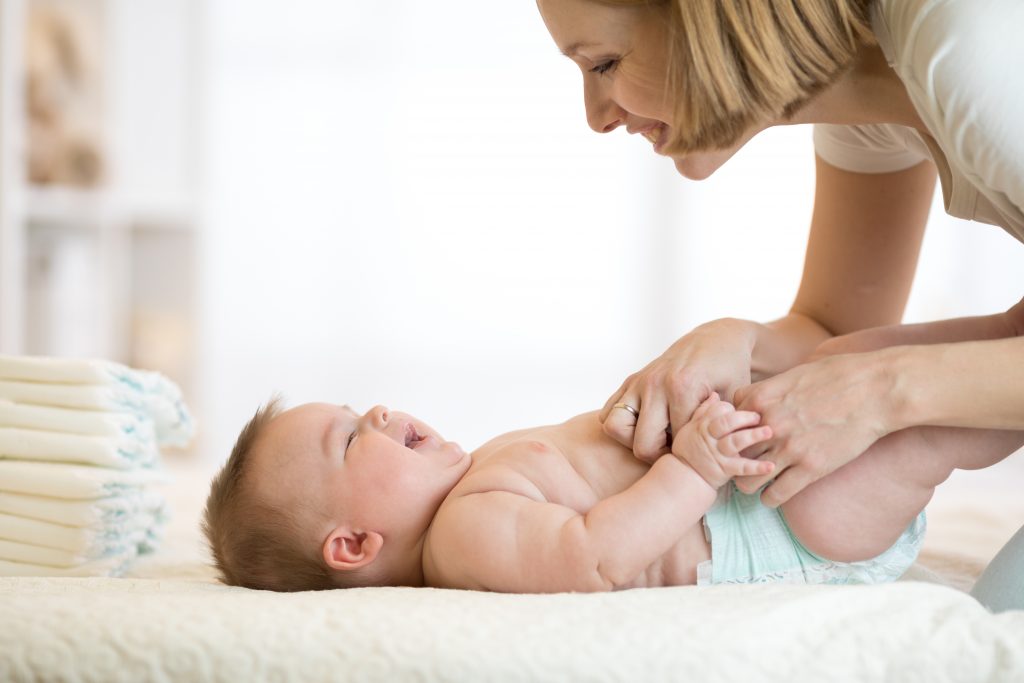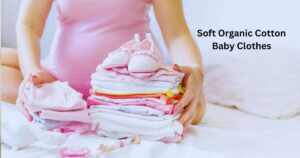Changing a baby’s diaper is crucial to prevent diaper rash and maintain hygiene. It ensures the baby’s comfort and health.
Proper diaper changing is essential for a baby’s overall well-being. Babies have sensitive skin that can easily get irritated by prolonged exposure to wet or soiled diapers. This irritation can lead to painful diaper rashes or infections. Regular diaper changes keep the baby clean and comfortable, reducing the risk of skin problems.
Also, changing diapers frequently helps monitor the baby’s health, as urine and stool can indicate the baby’s hydration and digestion status. Thus, maintaining a regular diaper-changing routine is vital for the baby’s happiness and health.
Importance Of Diaper Changing
Changing a baby’s diaper is more than a routine task. It is crucial for the baby’s health and well-being. Regular diaper changing keeps your baby comfortable and happy.
Health Benefits
Diaper changing prevents diaper rash. A clean diaper means fewer germs. This reduces the risk of infections. Clean diapers also ensure the skin stays dry. Wet skin can lead to irritation.
Changing diapers often helps you check for any skin problems. You can notice any redness or swelling early. Early detection allows for quick treatment. This keeps your baby healthy and comfortable.
Comfort And Happiness
A clean diaper makes a baby feel fresh. Babies are happier when they are comfortable. Wet or dirty diapers can cause discomfort. This can make your baby fussy or irritable.
Regular diaper changes ensure your baby stays content and joyful. A comfortable baby sleeps better. Better sleep leads to better growth and development.
Here are some tips to ensure your baby’s comfort:
- Change diapers every 2-3 hours.
- Use a gentle, fragrance-free wipe.
- Apply a thin layer of diaper cream to prevent rashes.
Preventing Diaper Rash
Changing a baby’s diaper regularly is crucial for their health. One key reason is to prevent diaper rash. This common issue can cause discomfort and distress to your baby. By understanding the causes and effective prevention methods, you can keep your baby’s skin healthy and rash-free.
Causes Of Diaper Rash
Diaper rash can occur due to several reasons. Here are some common causes:
- Prolonged Wetness: Wet diapers can irritate a baby’s sensitive skin.
- Friction: Rubbing of the diaper against the skin can cause rashes.
- Allergies: Some babies are allergic to certain diaper materials.
- Infrequent Changes: Not changing diapers often enough leads to rashes.
- Yeast Infections: Warm, moist environments can encourage yeast growth.
Effective Prevention
Preventing diaper rash is easier with the right steps. Here are some effective methods:
- Change Diapers Frequently: Check and change diapers every two to three hours.
- Use Barrier Creams: Apply a thin layer of barrier cream to protect the skin.
- Ensure Proper Fit: Make sure the diaper fits snugly but not too tight.
- Choose Gentle Products: Use hypoallergenic and fragrance-free wipes and diapers.
- Air Out: Let your baby go diaper-free for short periods daily.
By following these steps, you can keep your baby’s skin healthy and happy. Regular diaper changes and proper care are key to preventing diaper rash.
Diaper Changing Frequency
Changing your baby’s diaper frequently is crucial for their health and comfort. Babies have sensitive skin that can easily get irritated by wetness or waste. Understanding how often to change your baby’s diaper can help prevent diaper rash and keep your baby happy.
Newborns Vs. Older Babies
Newborns typically need more frequent diaper changes than older babies. Newborns may need a diaper change every 2 to 3 hours. This frequency is due to their frequent feedings and bowel movements. On the other hand, older babies might only need a change every 4 to 6 hours. This is because their bladder capacity increases as they grow.
| Age | Diaper Change Frequency |
|---|---|
| Newborns (0-3 months) | Every 2-3 hours |
| Infants (3-12 months) | Every 3-4 hours |
| Toddlers (12+ months) | Every 4-6 hours |
Signs Of A Wet Or Dirty Diaper
Knowing the signs of a wet or dirty diaper can help you change it promptly. Here are some signs to look for:
- The diaper feels heavy or bulky.
- You notice a change in your baby’s mood.
- You smell a strong odor from the diaper area.
- Your baby touches or tugs at their diaper.
Wet diapers can cause discomfort and lead to skin irritation. Dirty diapers can cause diaper rash and infections if not changed quickly. Checking your baby’s diaper regularly ensures their comfort and health.

Credit: www.judesfamily.com
Essential Diaper Changing Supplies
Changing a baby’s diaper is a crucial part of baby care. Having the right supplies makes this task easier and more hygienic. Let’s explore the essential diaper changing supplies you need.
Diapers And Wipes
Diapers are the primary item you need. Choose diapers that fit your baby’s size. There are various types like disposable, cloth, and biodegradable. Each has its pros and cons. Disposable diapers are convenient. Cloth diapers are eco-friendly. Biodegradable diapers are good for the environment.
Wipes are equally important. They help clean your baby’s sensitive skin. Look for wipes that are gentle and alcohol-free. Some parents prefer reusable cloth wipes. They are soft and can be washed easily.
Changing Stations And Mats
Changing stations provide a dedicated space for diaper changes. They often come with drawers and shelves. This helps store diapers, wipes, and other supplies. Ensure the station is sturdy and safe.
Changing mats are portable and easy to clean. Place them on the changing station or any flat surface. Mats protect your baby and the surface from messes. Choose mats that are waterproof and padded for comfort.
| Item | Details |
|---|---|
| Diapers | Choose between disposable, cloth, and biodegradable. |
| Wipes | Opt for gentle, alcohol-free wipes. |
| Changing Station | Provides a dedicated, organized space for diaper changes. |
| Changing Mat | Portable, waterproof, and padded for comfort. |
- Diapers: Different types available for various needs.
- Wipes: Ensure they are gentle on your baby’s skin.
- Changing Station: Keeps supplies organized and accessible.
- Changing Mat: Easy to clean and comfortable.
Proper Diaper Changing Technique
Changing a baby’s diaper is a crucial task for every parent. A proper diaper changing technique ensures your baby stays clean and comfortable. It also helps in preventing diaper rash and infections. Let’s break down the process into simple steps.
Step-by-step Guide
- Gather your supplies: Diapers, wipes, diaper cream, and a changing mat.
- Lay your baby down: Place your baby on the changing mat.
- Remove the dirty diaper: Unfasten the tabs and fold the diaper away.
- Clean the baby: Use wipes to clean the baby’s bottom from front to back.
- Apply diaper cream: If needed, apply a thin layer of diaper cream.
- Put on a fresh diaper: Slide a new diaper under the baby and fasten the tabs.
- Dispose of the dirty diaper: Roll it up and throw it away.
- Wash your hands: Always wash your hands after changing a diaper.
Hygiene Practices
Maintaining hygiene during diaper changes is essential. It keeps your baby healthy and prevents infections.
- Use a clean changing mat: Ensure the changing mat is always clean.
- Wash your hands: Always wash your hands before and after changing a diaper.
- Sanitize diaper area: Clean the diaper area thoroughly to avoid rashes.
- Dispose properly: Dispose of dirty diapers in a sealed bin to avoid odors.
- Regularly change diapers: Change diapers frequently to keep the baby dry.
Choosing The Right Diaper
Choosing the right diaper for your baby is crucial. It ensures comfort, prevents rashes, and keeps your baby dry. There are many options available, so making an informed choice is key. Let’s explore the different types of diapers and how to find the perfect size and fit for your little one.
Cloth Vs. Disposable
Cloth diapers are reusable and eco-friendly. They come in various materials like cotton, bamboo, and hemp. They are gentle on your baby’s skin and can save money in the long run. Disposable diapers are convenient and easy to use. They are great for travel and overnight use. They are designed to be highly absorbent and keep your baby dry.
| Feature | Cloth Diapers | Disposable Diapers |
|---|---|---|
| Environmental Impact | Low | High |
| Cost | Cost-effective over time | Higher ongoing cost |
| Convenience | Requires washing | Single-use |
| Skin Sensitivity | Natural materials | Can cause rashes |
Size And Fit
Choosing the right size and fit ensures your baby’s comfort. Diapers come in various sizes based on your baby’s weight. A good fit prevents leaks and keeps your baby dry. Make sure the diaper is snug around the waist and legs but not too tight. Check the manufacturer’s size chart for guidance.
- Newborn: Up to 10 lbs
- Size 1: 8-14 lbs
- Size 2: 12-18 lbs
- Size 3: 16-28 lbs
- Size 4: 22-37 lbs
- Size 5: 27+ lbs
- Size 6: 35+ lbs
Regularly check if the diaper size still fits your baby. As your baby grows, you may need to switch sizes. A well-fitted diaper ensures your baby stays happy and comfortable.
Eco-friendly Diapering Options
Changing a baby’s diaper is essential for health and comfort. Eco-friendly diapering choices benefit the environment and your baby. Below, explore two main options: biodegradable diapers and reusable alternatives.
Biodegradable Diapers
Biodegradable diapers decompose faster than traditional disposables. They are made from natural materials like bamboo and cornstarch. These diapers reduce landfill waste and lower your carbon footprint.
- Materials: Bamboo, cornstarch, and other plant-based components
- Benefits: Faster decomposition, fewer chemicals
- Drawbacks: Higher cost, limited availability
Biodegradable diapers are a great step towards a greener lifestyle. They are kinder to your baby’s skin, reducing the risk of rashes. Parents who choose these diapers often feel good about their decision.
Reusable Alternatives
Reusable diapers can be washed and used again. They are often made from cloth and other sustainable materials. These diapers significantly reduce waste compared to disposables.
- Types: Prefolds, pocket diapers, all-in-ones
- Benefits: Cost-effective over time, less waste
- Drawbacks: Initial investment, laundry effort
Reusable diapers come in various styles to suit different needs. They are soft, breathable, and gentle on your baby’s skin. Many parents find them a practical and eco-friendly choice.
| Option | Materials | Benefits | Drawbacks |
|---|---|---|---|
| Biodegradable Diapers | Bamboo, Cornstarch | Decomposes faster, Fewer chemicals | Higher cost, Limited availability |
| Reusable Diapers | Cloth, Sustainable materials | Cost-effective, Less waste | Initial investment, Laundry effort |

Credit: www.saintlukeskc.org
Common Diaper Changing Challenges
Changing a baby’s diaper can present various challenges. Parents often encounter several common issues during this essential task. Addressing these challenges effectively ensures a smoother experience for both the parent and the baby.
Wiggly Babies
Babies love to move around, especially during diaper changes. This can make it hard to keep them still. Here are some tips to manage wiggly babies:
- Use a distraction like a favorite toy or a mobile.
- Sing songs or talk to your baby to hold their attention.
- Change diapers on a safe, flat surface to prevent falls.
Diaper Leaks
Diaper leaks are common and can be frustrating. Ensuring the right fit and proper usage of diapers can help minimize leaks. Consider these points:
| Tip | Explanation |
|---|---|
| Choose the right size | Diapers that are too big or too small can cause leaks. |
| Check diaper frequently | Regular checks help in changing diapers before they overflow. |
| Ensure proper fit | Make sure the diaper fits snugly but comfortably around the waist and legs. |
Travel Diaper Changing Tips
Traveling with a baby can be challenging, especially when it comes to diaper changes. Proper preparation and knowing some key strategies can make diaper changes on the go much easier. Here are some essential travel diaper changing tips to keep your baby comfortable and happy.
Portable Supplies
Having the right portable supplies can make a big difference. Keep a well-stocked diaper bag ready for any situation. Essential items include:
- Diapers: Pack more than you think you’ll need.
- Wipes: Wet wipes are a must for any mess.
- Changing Pad: A foldable changing pad provides a clean surface.
- Hand Sanitizer: Use it when soap and water aren’t available.
- Disposable Bags: For dirty diapers and soiled clothes.
Organize these items in your diaper bag for quick access. A well-organized bag saves time and stress.
Public Restroom Strategies
Public restrooms can be tricky for diaper changes. Here are some strategies to make it easier:
- Scout Locations: Know where restrooms are before you need them.
- Use Changing Stations: Many restrooms have baby changing stations.
- Sanitize Surfaces: Wipe down surfaces with sanitizing wipes.
- Quick Changes: Be efficient to minimize stress for your baby.
- Privacy Matters: Use a cover if you need privacy.
Always keep safety in mind. Never leave your baby unattended on a changing table.

Credit: www.facebook.com
Frequently Asked Questions
How Often Should You Change A Baby’s Diaper?
You should change your baby’s diaper every 2 to 3 hours. This helps prevent diaper rash and keeps the baby comfortable.
What Are The Risks Of Not Changing A Diaper?
Not changing a diaper can lead to diaper rash, infections, and discomfort. It is crucial for the baby’s health.
Can A Dirty Diaper Cause Infections?
Yes, a dirty diaper can cause infections like urinary tract infections. Always keep the diaper area clean and dry.
Why Is Diaper Hygiene Important?
Diaper hygiene is important to prevent rashes, infections, and discomfort. It keeps your baby healthy and happy.
Conclusion
Changing a baby’s diaper is crucial for their health and comfort. Regular changes prevent diaper rash and infections. This simple act ensures your baby stays happy and healthy. Remember, frequent diaper checks and timely changes contribute to your baby’s overall well-being.
Prioritize this routine for a happier, healthier baby.




